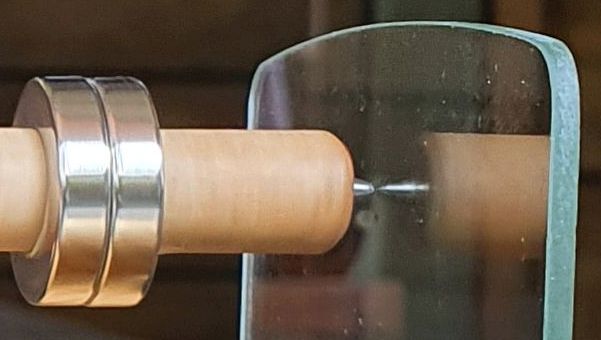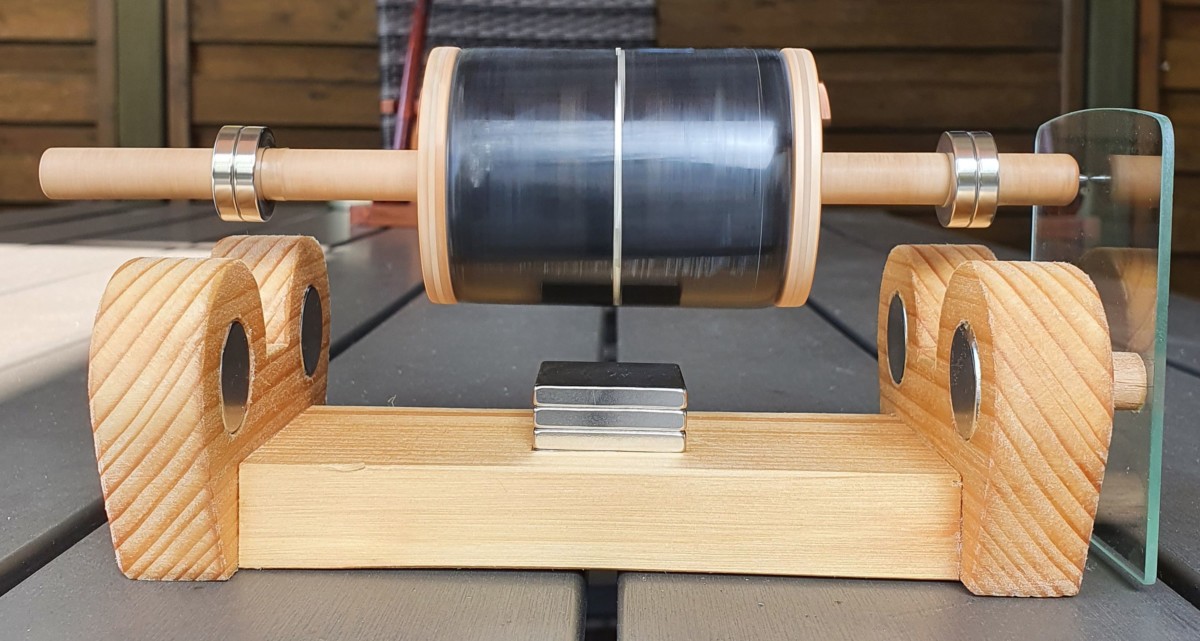Today we would like to introduce you to a very impressive magnet application; Solar motor with floating rotor made of wood
There is no practical application for this engine. It is a real eye-catcher on the window sill and always amazes guests.
Solar motor with floating rotor made of wood
Floating rotor
To make the rotor levitate, 4 magnets in the stator and at least 2 magnets on the shaft are required.
I used 4 disc magnets Ø 20 x 10 mm (SM-20×10-N) for the stator and 2 x 2 ring magnets Ø 18 x 10 x 4 (RM-18x10x04-N) for the rotor.
To make the rotor float, the magnets must be arranged according to the drawing.
In order to protect the rotor from swinging, a degree of freedom must be restricted. This was done by inserting a ballpoint pen refill.
By supporting the ball on the rear pane of glass, an illusion is created. This represents a completely free-floating rotor.
Rotation of the rotor (motor operation)
Here the law of the Lorentz force comes into play. The force that a current-carrying conductor (or coil) experiences in a magnetic field. For this purpose, 4 coils made of enamelled copper wire were wound onto the coil carrier below the solar cells of the rotor.
Each coil is electrically connected to 2 solar cells that are offset by 180 °. When light falls, current flows continuously through the coil. The solar cell of the coil faces the light source.
The field magnets are located below the rotor in the center of the stator. Here I would have used 4 block magnets QM-20x20x03-N, but had older, somewhat larger block magnets from another project in stock, so I used them.
The current in the coils in connection with the field of the block magnets generates the Lorentz force, which in turn generates a torque on the rotor. When light falls on the solar cells, the rotor turns continuously.
Material list:
- Ring magnets RM-18x10x04-N 4 pieces
- Disc magnets SM-20×10-N 4 pieces
- Block magnets QM-20x20x03-N 4 pieces
- 8 solar cells 0.5 V / 150 mA – with solder connection (item number: 695-SM150L from EDUNIKUM)
- 60 g enamelled copper wire Ø 0.25 mm
- Plywood 4 – 5 mm thick
- Solid wood 18.5 – 19 mm thick
- Round wood Ø 10 mm
- Glass pane approx. 70 x 80 mm 2, approx. 2 mm thick (in this case, from an old picture frame)
- Refill of a ballpoint pen
- Two-component adhesive
- Wood glue
- Solder
- Support
Video:







